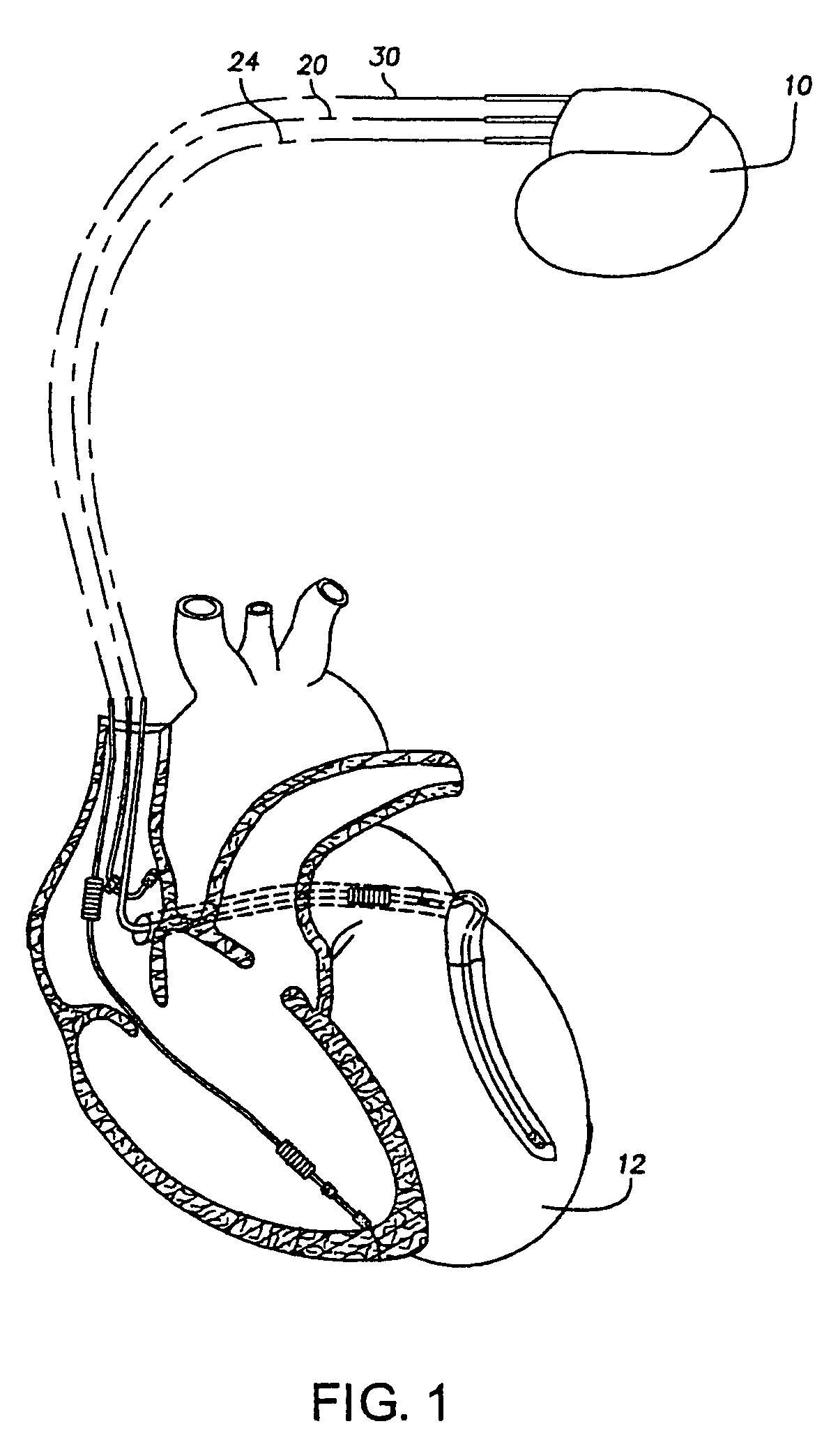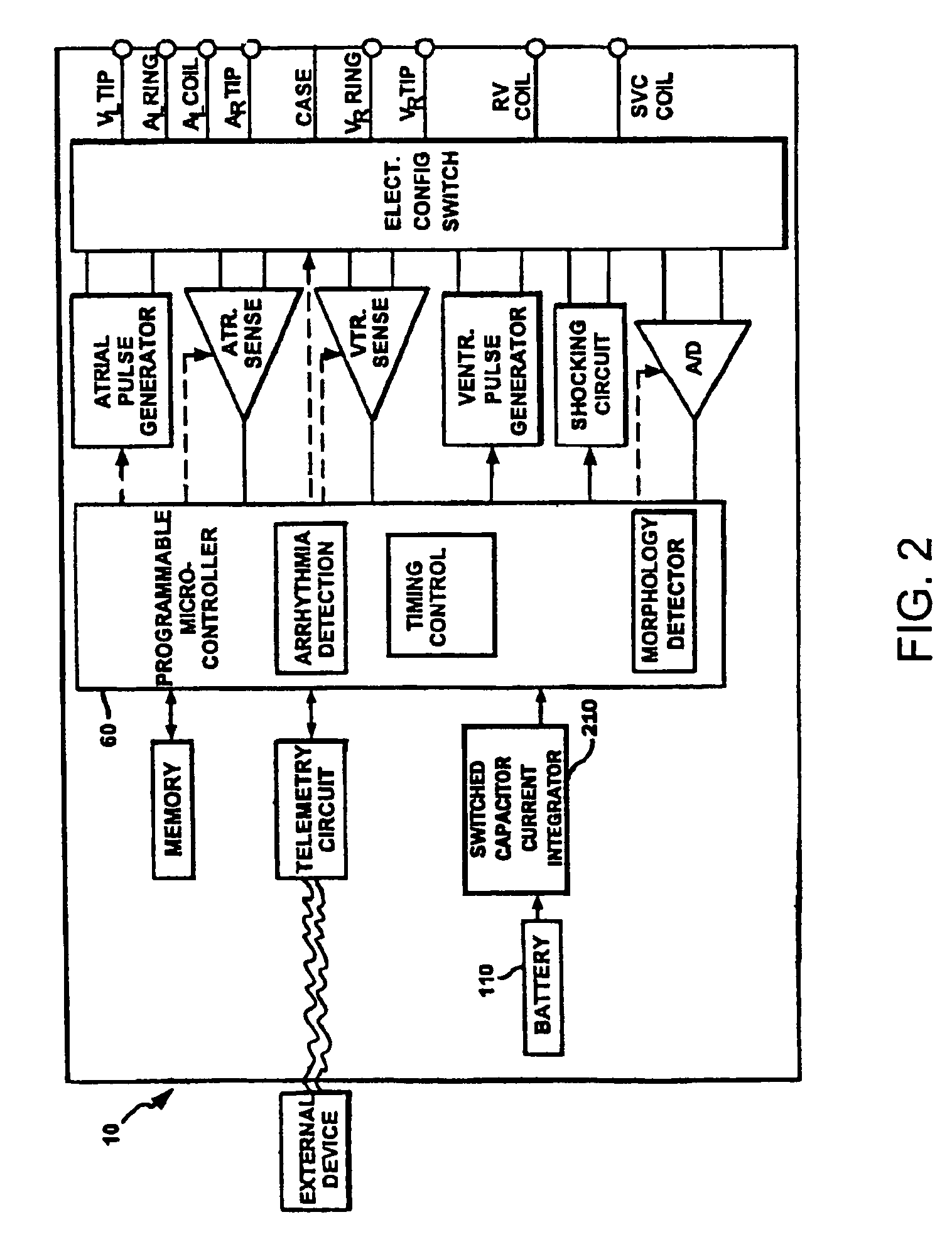Method and apparatus for measuring battery depletion in implantable medical devices
- Summary
- Abstract
- Description
- Claims
- Application Information
AI Technical Summary
Benefits of technology
Problems solved by technology
Method used
Image
Examples
example implementation
of a Switched Capacitor Current Integrator
[0052]FIGS. 4A–4B illustrate a circuit schematic for an example implementation of switched capacitor current integrator 210, shown in FIG. 3A, in accordance with an example embodiment of the present invention. The embodiment shown in FIGS. 4A–4B operates in the same manner as described above. Selected components of the switched capacitor current integrator of FIGS. 4A–4B are described below in reference to their corresponding elements shown in FIG. 3A.
[0053]FIG. 4A shows four switches Q1–Q4 arranged in an H-bridge configuration with a switched capacitor C2, which corresponds to switched capacitor 310 in FIG. 3A. Switches Q1–Q4 of FIG. 4A are implemented with metal oxide semiconductor field-effect transistors (MOSFETs). Switches Q1 and Q2, which correspond to first and second switches 302 and 304 in FIG. 3A, are coupled together at first node 301 and in series between battery 110 and a reservoir capacitor C3. Reservoir capacitor C3 correspond...
PUM
 Login to View More
Login to View More Abstract
Description
Claims
Application Information
 Login to View More
Login to View More - R&D
- Intellectual Property
- Life Sciences
- Materials
- Tech Scout
- Unparalleled Data Quality
- Higher Quality Content
- 60% Fewer Hallucinations
Browse by: Latest US Patents, China's latest patents, Technical Efficacy Thesaurus, Application Domain, Technology Topic, Popular Technical Reports.
© 2025 PatSnap. All rights reserved.Legal|Privacy policy|Modern Slavery Act Transparency Statement|Sitemap|About US| Contact US: help@patsnap.com



